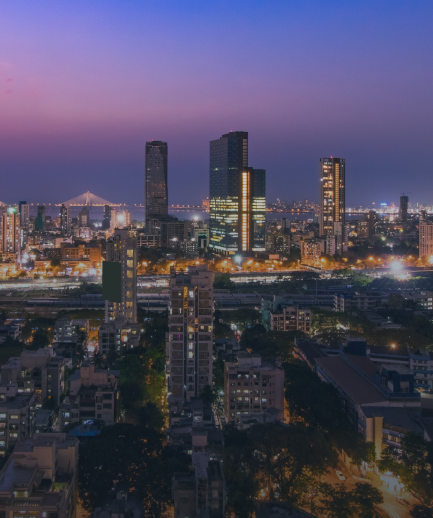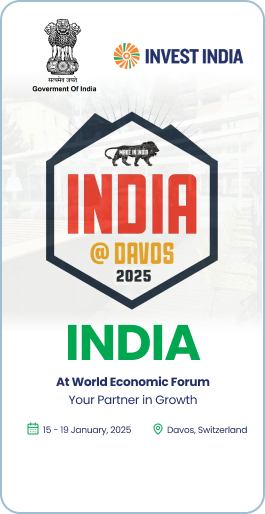Capital Goods
India's Capital Goods sector is experiencing significant attention due to its critical role in driving industrial growth and economic development. This sector encompasses industries such as electrical equipment, machinery, and construction, which are essential for the country's infrastructure development. According to the Indian Electrical and Electronics Manufacturers’ Association (IEEMA), the electrical equipment industry recorded an estimated production of INR 2,50,000 Cr (approximately $30 Bn) in 2022–23. The industry saw consistent double-digit growth in power equipment, particularly transmission equipment and transformers, driven by domestic demand and international market expansion.
The Indian Construction Equipment Manufacturers' Association (ICEMA) highlighted robust growth in the construction equipment segment, propelled by the government's emphasis on large-scale infrastructure projects and urban development. The construction equipment industry is integral to India's ambitious infrastructure initiatives, including developing smart cities, expanding transportation networks, and building modern facilities.
Additionally, the Indian Machine Tool Manufacturers' Association (IMTMA) reported significant expansion in the machine tool industry, fueled by demand from key sectors such as automotive, aerospace, and defence. The machine tool industry is a vital component of the manufacturing process, providing necessary tools and machinery for producing high-quality products across various industries.
Government initiatives have been instrumental in bolstering the Capital Goods sector. The Ministry of Heavy Industries has launched several policies to boost domestic production and reduce reliance on imports. These initiatives are part of the broader 'Make in India' campaign, which seeks to increase the manufacturing sector's contribution to GDP, generate employment, and improve technological capabilities. The government's efforts to modernize the sector and promote advanced manufacturing technologies are expected to enhance the competitiveness of Indian products in global markets.
Overall, the Capital Goods sector is crucial to India's economic strategy, supporting large-scale manufacturing and infrastructure projects. With rapid urbanization, extensive infrastructure development, and strong government support, the sector is poised to drive sustainable industrial growth and elevate India's position in the global market. The ongoing focus on this sector underscores its importance in achieving the country's long-term economic goals and ensuring robust industrial development.
Electric Mobility
Reflecting on India's commitment to address environmental concerns, reduce emission intensity of its gross domestic product (GHG emissions per unit GDP) by 33%–35% over 2005 levels by 2030, and embrace sustainable transportation solutions, electric mobility is emerging as one of the cardinal segments in the automobile industry in India. It is estimated that E-Two Wheelers will reach a market of 5 Mn by 2025, with E-Three Wheelers accounting for 30% of sales.
Growing at a compounded annual growth rate of 49% between 2021 and 2030, the government anticipates the EV segment to cross annual sales of 17 Mn units by 2030. To encourage the adoption of electric vehicles, the Government of India initiated the second phase of Faster Adoption and Manufacturing of (Hybrid &) Electric Vehicles in 2019. This initiative spans a period of 5 years, with a total budgetary support of INR 10,000 Cr. The primary focus is on electrifying public and shared transportation, with the aim of providing subsidies for 7262 e-Buses, 1.6 lakh e-3 Wheelers, 30461 e-4 Wheeler Passenger Cars, and 15 lakh e-2 Wheelers. The overall Electric Vehicle penetration of India is projected to grow 8x by 2030 from the current 5%.
The National Programme on Advanced Chemistry Cell (ACC) Battery Storage, which aims to establish Gigascale ACC and battery manufacturing facilities in India, has incentivized the adoption rate of this segment, leading to a 40% surge in the number of registered EVs in 2023 compared to 2022. With an aim to go fully electric by 2030, automotive players like Tata Nexon EV, Hero Electric Vehicles Pvt Ltd (Hero Electric Eddy), Mahindra Electric Mobility Limited (Mahindra eVerito), etc. have been engaged in research and development, in addition to working towards equipment for EVs, including GPS navigation, remote sensors, anti-theft locking systems, and more.
Bridging the gap of various challenges through the government's initiatives of charging infrastructure for electric vehicles, electric mobility in India is henceforth leaping towards a quantum surge in volumes and technology.
Electronic Components and Materials
The Electronic Components Manufacturing sector in India is gaining significant momentum, marked by robust government support and strategic initiatives aimed at transforming the country into a global electronics hub. As of March 2023, the electronics market in India was valued at $101 Bn, with an ambitious target of reaching $300 Bn by 2025-26. The Production Linked Incentive schemes have played a pivotal role, boosting production and attracting substantial investments from major global players such as Apple and Samsung. The Ministry of Electronics and Information Technology (MeitY) has spearheaded several key initiatives, including the Scheme for Promotion of Manufacturing of Electronic Components and Semiconductors (SPECS) and the Modified Electronics Manufacturing Clusters (EMC 2.0) scheme, which aim to create world-class infrastructure and encourage investment in high-value components.
The sector has seen a notable increase in exports, with electronic goods exports reaching $29.12 Bn in FY 2023–24, marking a 23.6% rise from the previous year. The National Policy on Electronics 2019 underscores the government's commitment to developing a $300 Bn electronics manufacturing ecosystem by 2026.
Government initiatives are further supported by the Make in India and Digital India campaigns, which aim to enhance domestic manufacturing, create employment opportunities, and advance technological capabilities. Significant investments in research and development, as well as the establishment of electronics manufacturing clusters, have created a conducive environment for growth.
The focus on the Electronic Components Manufacturing sector is crucial for meeting the rising domestic demand driven by rapid digitalization and urbanization and for integrating India into the global supply chain. This sector's development is essential for driving economic growth, fostering innovation, and positioning India as a key player in the global electronics market. The government's comprehensive approach, combining policy support, infrastructure development, and incentives, underscores the strategic importance of this sector in achieving India's long-term economic and technological goals.
Food Processing
India’s food processing industry has undergone rapid transformation, driven by its vast agricultural base, rising domestic demand, and supportive government policies. As of 2024, India is poised to emerge as a global leader in the food processing sector, with a growth trajectory that outpaces many developed economies. Agriculture sector forms the backbone of the India’s food processing industry, India being the largest producer of fruits, vegetables, millets, tea, and food grains as well as milk and livestock globally.
The country’s agricultural diversity serves as a strong base for growing demand in food processing, both domestically and for exports. In FY 2023, India produced 212 million metric tons of vegetables and 112 million metric tons of fruits, demonstrating the immense capacity of its agricultural sector. India is the largest producer as well as the largest exporter of cereal products in the world. Rice (including Basmati and Non-Basmati) occupy the major share in India's total cereals export with 95%. Major export destinations for 2023-24 were Saudi Arabia, Iran, Iraq, Benin, United Arab Emirates and Vietnam.
A robust food processing sector is essential for diversifying and commercializing agriculture, extending shelf life, adding value to agricultural produce, creating employment opportunities, boosting farmers’ incomes, and expanding export markets for agro-based products.
Pharmaceuticals
India's pharmaceutical sector is driven by a robust scientific and technological base, leading globally with the largest vaccine production, accounting for ~60% of global vaccine production and supplying to over 150 countries. Major segments of the pharma sector in India include generic drugs, OTC medicines, bulk drugs, vaccines, contract research and manufacturing, biosimilars and biologics. With pharma exports standing at $25.4 Bn in FY 2022–23 and the USA being the largest export destination for Indian pharmaceuticals, the industry is propelled by an ambition to achieve a $450 Bn market by 2047. Telangana, being the only state in the world with 214+ USFDA-approved facilities, 20+ life sciences and medtech incubators, and home to ~1,000 pharma and biotech companies with a valuation of $50 Bn, showcases the country's ambition to become the Pharmaceutical Hub of the World.
The pharmaceutical manufacturing landscape and India's economic growth potential attract investments into the sector, making the pharmaceutical sector the ninth largest segment in attracting FDI inflows till September 2023. India contributes up to 70% of the WHO's demand for Diphtheria, Tetanus and Pertussis (DPT) and Bacillus Calmette–Guérin (BCG) vaccines and 90% of the WHO's demand for the measles vaccine. Research and development in the Indian pharmaceutical industry have been fuelled by the government's schemes, like the Production-Linked Incentive Scheme (PLI) for Pharmaceuticals, which aims to enhance India's manufacturing capabilities by increasing investment and production in the sector. The sector also boasts a liberal FDI policy. 100% FDI is permissible through the automatic route for greenfield investments, up to 74% FDI is permissible through the automatic route for brownfield investments and beyond 74% FDI is allowed under the government route.
Furthermore, to cater to the availability of quality generic medicines at affordable prices, about 10,000 Pradhan Mantri Bhartiya Janaushadhi Kendras (PMBJKs) have been opened across the country, and 1,965 medicines and 293 surgical equipment covering all major therapeutic groups, such as anti-infectives, anti-diabetics, cardiovascular, anti-cancer, gastro-intestinal, etc., have been added to the PMBJP for sale. To offer cost-effective solutions to the world, along with qualified and skilled scientists and researchers, India aims to be a major catalyst in the global supply chains, ranging from generics to complex formulations, biologics, etc.
Renewable Energy
India's energy landscape has undergone a vast transition, with the focus shifting towards renewable means in the era of sustainability. As the world repositions itself towards sustainability, India's renewable sector unleashes a new scope of opportunities. Over the past decade, India has made significant strides in diversifying its energy mix, gradually reducing its dependence on conventional fossil fuels, and setting an enhanced target at the COP26 of 500 GW of non-fossil fuel-based energy by 2030. India’s installed non-fossil fuel capacity has increased 396% in the last 8.5 years and stands at more than 205.52 GW (including large hydro and nuclear), about 42% of the country’s total capacity (as of November 2024). Solar power has witnessed a 30-fold surge in adoption, with installed capacity increasing from a mere 2.5 GW in 2014 to about 94.16 GW as of November 2024. The government's commitment to creating a sustainable world and scaling up solar capacity through initiatives like the International Solar Alliance reflects the country's potential to harness solar power in collaboration with more than 120 signatory countries.
In addition, 100% FDI has been allowed under the automatic route for renewable energy generation and distribution projects subject to provisions of the Electricity Act 2003. India, at the 26th session of the United Nations Framework Convention on Climate Change (COP 26) in November 2021, announced its target to achieve net zero by 2070, and hence the renewable energy sector poses a vast range of potential beyond creating a cleaner future. Furthermore, with more than 2 times the leap in wind energy capacity to 47.95 GW today since 2014, India also looks forward to expanding the capacity to 99.9 GW by 2029-30 in major wind energy-producing states like Andhra Pradesh, Gujarat, Karnataka, Maharashtra, Rajasthan, Kerala, etc. The government of India has launched several initiatives, such as the development of solar parks, under which 50 solar parks across 12 states have been sanctioned with capacities of 500 MW or more. Sustainable Alternative Towards Affordable Transportation (SATAT) has been launched as an initiative to set up a Compressed Bio-Gas (CBG) production plant and make CBG available in the market for use in automotive fuels. The 100 Smart City project also includes a mandatory provision of roof-top solar for new construction and a 10% renewable energy provision for end-customers. The shift towards renewable energy, hence, involves a focal point towards the renewable energy segment, which has the potential to create more job opportunities and lead the world to inclusive growth.
Textiles & Apparel
With rising per capita income, presently at $2,350, India boasts the second-largest working population with a median age of 28 years. The textile industry in India, thus, gains a pivotal role in knitting the tapestry of dynamism and growth of the sector with about a 4.5% share in the global textile and apparel trade. With a diverse range of fabrics and intrinsic craftsmanship, the textile sector offers a wealth of opportunities. India possesses the capability to manufacture the entire value chain, and its products are exported to more than 100 countries. The sector provides employment to over 45 Mn people and produces about 22,000 Mn pieces of garments per year, with the market size projected to reach $350 Bn by 2030, from the current $174 Bn. With transformative changes in the textile sector, the government has also launched the PM MITRA Park Scheme with an outlay of INR 4,445 Cr to create an integrated textiles value chain from spinning to manufacturing at a single location. In line with the growth roadmap, the Indian textile market currently ranks fifth globally, and the government is actively working to accelerate this growth to a rate of 15-20% over the next five years. Moreover, the sector acts as a crucial link between the agriculture and industrial sectors, supporting the cultivation of cotton, silk, and other natural fibres and thus bridging the gap.
Recently, the government of India has also taken up initiatives to enhance cotton production. Kasturi Cotton, launched by the Ministry of Textiles, is a first-of-its-kind branding, traceability, and certification exercise carried out jointly by the Government of India, trade bodies, and industry to promote Indian cotton. Stakeholders across the supply chain, including farmers, ginning units, spinning mills, processing houses, weaving units, garmenting units, home textile manufacturers, and even retailers and brands, will be involved in a collaborative effort to promote and enhance the value of Indian cotton across the domestic and overseas markets. The government has also taken key initiatives, like the Production-Linked Incentive Scheme, to promote the production of MMF apparel, MMF fabrics, and technical textile products in the country. With a view to enhancing the skills of the workforce in the textile sector, the Samarth Scheme has been formulated under a broad skilling policy framework with the objective of providing opportunities for sustainable livelihood.
Our Services










- Identifying niche investment opportunities to invite strategic partners
- Leveraging the growing ecosystem to scale up the value chain
- Bridging the Industry-Government gap through robust stakeholder consultations
- Representing India on global platforms to attract Investments
- Strategic Collaborations with Global organisations and multilateral
- Cutting-edge research on sectoral opportunities across Indian States
- One-stop-shop for all Central and State level policy information
- Up-to-date repository of Investible Opportunities, and a snapshot of the investment ecosystem, infrastructure, and supply chains across sectors
- Strategic location assessment based on Investor requirements
- Incentive advisory
- Representation to State Governments and Central Ministries
- Site visits to evaluate the feasibility of potential locations
- Single-window clearance support for regulatory clearances, permissions, and compliance
- Continuous relationship management with investors post-operationalization
- Interventions for fast-track issue resolution at the Central and State level
- Facilitation and advisory for expansion
Event Description to be added in this dummy placeholder textbox. Event Description to be added in this dummy placeholder textbox. Event Description to be added in this dummy placeholder textbox.
Event Description to be added in this dummy placeholder textbox. Event Description to be added in this dummy placeholder textbox. Event Description to be added in this dummy placeholder textbox.
Event Description to be added in this dummy placeholder textbox. Event Description to be added in this dummy placeholder textbox. Event Description to be added in this dummy placeholder textbox.









